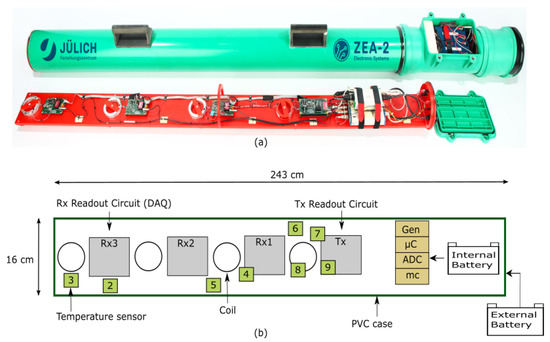Electromagnetic Sensors
A topical collection in Sensors (ISSN 1424-8220). This collection belongs to the section "Physical Sensors".
Viewed by 23418Editor
Interests: scientific computing; applied and computational electromagnetics; sensors and biosensors; inverse problems and imaging; image processing; topological data analysis
Special Issues, Collections and Topics in MDPI journals
Topical Collection Information
Dear Colleagues,
Many sensors use electromagnetic fields as a sensing mechanism to capture a large quantity of information from the environment around them. The range of applications of sensors based on electric, magnetic or electromagnetic fields is wide and varied. Amongst them, we can find robotics, industry, security, plant control, medicine, agriculture and environmental monitoring, quality control and inspection, steel production, autonomous driving, powertrain management, automotive and marine sectors.
Electromagnetics is the sensing principle of many proximity and position sensors, pressure sensors, flowmeters, current sensors, magnetic field sensors, anemometers, wind vanes, accelerometers, thermometers, non-destructive testing devices based on eddy currents, magnetic induction tomography, magnetic resonance imaging (MIT) and biosensors based on the surface plasmon resonance (SPR), electrical impedance spectroscopy (EIS) or electrical impedance tomography (EIT).
An emerging and important aspect of the sensor design is its optimization, which aims at reducing as much as possible the sensor error in the measurements. For this aim, it is necessary to develop a virtual prototype of the sensors with the help of electromagnetic modelling and computer simulation. A fast and predictive model is, in fact, an enabling technology for automatic sensor optimization and the real exploitation of the potential advantages of digital twins.
This topical collection aims to attract original research articles in the fields of electromagnetic sensors and their applications, including the research on novel sensing principles, sensor fabrication and characterization, and sensor modelling and optimization. Review articles on the recent progress or survey of previous works are also welcome.
This Topical Collection invites contributions in the following topics (but is not limited to them):
- Proximity sensors.
- Rotary position sensors.
- Linear position sensors, level sensors.
- Arc position sensors.
- Absolute or incremental position sensors.
- Magnetic encoders, digital resolvers, inductive position sensors (IPS), Hall and magnetoresistive position sensors, Linear Variable Differential Transformer (LVDT), IPS with resonant target.
- Capacitive position sensors.
- Anemometers, wind vanes.
- Electromagnetic flowmeters.
- Electromagnetic pressure sensors.
- Current sensors, Rogowski Coils.
- Accelerometers.
- Magnetic sensors, Hall sensors, giant magnetoresistance (GMR) sensors, anisotropic magnetoresistance (AMR) sensors, magnetoimpedance (MI) sensors, fluxgate sensors, optical magnetometers, atomic magnetometers, and superconducting quantum interference devices (SQUIDs)).
- Non-destructive evaluation applications using magnetic sensors or eddy currents.
- Near-field electric and magnetic field probes.
- Magnetic resonance imaging (MRI).
- Biomedical sensing using electromagnetic sensors, biosensors.
- Electrical Impedance Tomography (EIT).
- Electrical Impedance Spectroscopy (EIS).
- Electromagnetic sensors for steel production.
- Electromagnetic sensors for agriculture and marine monitoring.
- Sensor modelling and optimization, digital twins.
Dr. Ruben Specogna
Collection Editor
Manuscript Submission Information
Manuscripts should be submitted online at www.mdpi.com by registering and logging in to this website. Once you are registered, click here to go to the submission form. Manuscripts can be submitted until the deadline. All submissions that pass pre-check are peer-reviewed. Accepted papers will be published continuously in the journal (as soon as accepted) and will be listed together on the collection website. Research articles, review articles as well as short communications are invited. For planned papers, a title and short abstract (about 250 words) can be sent to the Editorial Office for assessment.
Submitted manuscripts should not have been published previously, nor be under consideration for publication elsewhere (except conference proceedings papers). All manuscripts are thoroughly refereed through a single-blind peer-review process. A guide for authors and other relevant information for submission of manuscripts is available on the Instructions for Authors page. Sensors is an international peer-reviewed open access semimonthly journal published by MDPI.
Please visit the Instructions for Authors page before submitting a manuscript. The Article Processing Charge (APC) for publication in this open access journal is 2600 CHF (Swiss Francs). Submitted papers should be well formatted and use good English. Authors may use MDPI's English editing service prior to publication or during author revisions.












